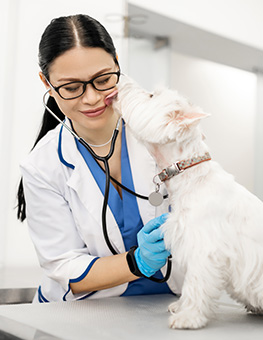Identifying and Treating your Dog’s Joint Problems
Joint problems can be trying for both you and your dog. Help your dog by knowing the signs and the treatments.
Joint problems are common in many dogs and can affect them in a variety ways, running the spectrum from minor annoyances to sources of great pain and discomfort. Joint problems can hinder walking, exercising, or performing many other tasks associated with his everyday life. Elbows and hips are among the most commonly afflicted areas, and issues range from dog arthritis to dysplasia. It is important for you to know the details of dog joint problems so that you can help him stay in shape.
Signs of Joint Pain
If your dog is suffering from joint pain, it shouldn’t be terribly difficult to identify, as it will interfere with his movement and mobility. Here are some signs you should watch out for, though, that will help you recognize if your dog needs treatment for joint problems. These include:
- Awkward movements
- Stiffness
- Difficulty standing
- Limping
- Refusal to jump or climb stairs
- An aversion to petting
- Swelling in the joints
- Bad temper
If you notice that your dog is showing one or more of these symptoms, you may want to take him to a veterinarian to determine the cause of his pain. Remember that your dog may be suffering from more than just joint pain if he exhibits any of these warning signs.
Causes of Joint Pain
Dog joint problems are caused by many disorders, most of which manifest themselves in a form of dog arthritis.
- Hip Dysplasia and other developmental problems: Hip dysplasia and similar conditions like elbow dysplasia are developmental, genetically inherited conditions. They occur when the joints do not grow properly and become dysfunctional, causing arthritic pain and discomfort.
- Cruciate ligament problems: Cruciate ligament problems are among the most common dog arthritis problems. They involve the wear and degeneration of a dog’s ligaments as he gets older, leading to arthritis and joint pain.
- Metabolic disease: Von Willebrand’s disease, a type of hemophilia, can cause excess bleeding in the joints, which may lead to arthritis-like symptoms.
- Other diseases: Many other diseases can cause arthritis or similar joint pain in dogs. These include obesity, Lyme disease, rheumatoid arthritis, cancer, and hyperparathyroidism. Your veterinarian should be consulted if you suspect that your pet may have any of these diseases.
Treatment
Regarding treatment, you should first visit your veterinarian so that he can diagnose exactly what is causing the pain in your dog’s joints. Many measures can be taken to help reduce pain and discomfort for your dog. These include, but are not limited to:
- Dietary changes: Eating the proper diet can help your dog fight joint pain. A balanced, vitamin and amino-acid rich diet will help your dog stay in shape and combat arthritis.
- Exercise: Getting the proper exercise will also help your dog fight joint problems. Conditioning is essential to staying healthy and at the right weight.
- Medication: Your veterinarian may recommend certain medications that can help reduce pain and swelling in your dog’s joints. This should only be used in addition to diet and exercise, and only at your veterinarian’s recommendation.
- Surgery: In more severe cases, your veterinarian may recommend surgery. Surgeries range in scale from simple cleaning procedures to joint replacements, but are usually only used when absolutely necessary.
Prevention
The best way to approach joint pain problems in your dog is to avoid them completely. This isn’t always possible, as joint problems are often genetic and occur more often in certain breeds, but there are some steps that can be taken to reduce the chance of developing dog arthritis. One is to manage your dog’s diet and exercise, making sure he stays at a healthy weight, and is getting the right, and a sufficient amount of vitamins. Additionally, you should research your dog’s breeding history to see if he might have a predisposition to joint problems. Finally, be sure to take your dog to the veterinarian regularly for his check up. Even if he isn’t showing it by limping, your dog may be starting to develop arthritis or other conditions.



















